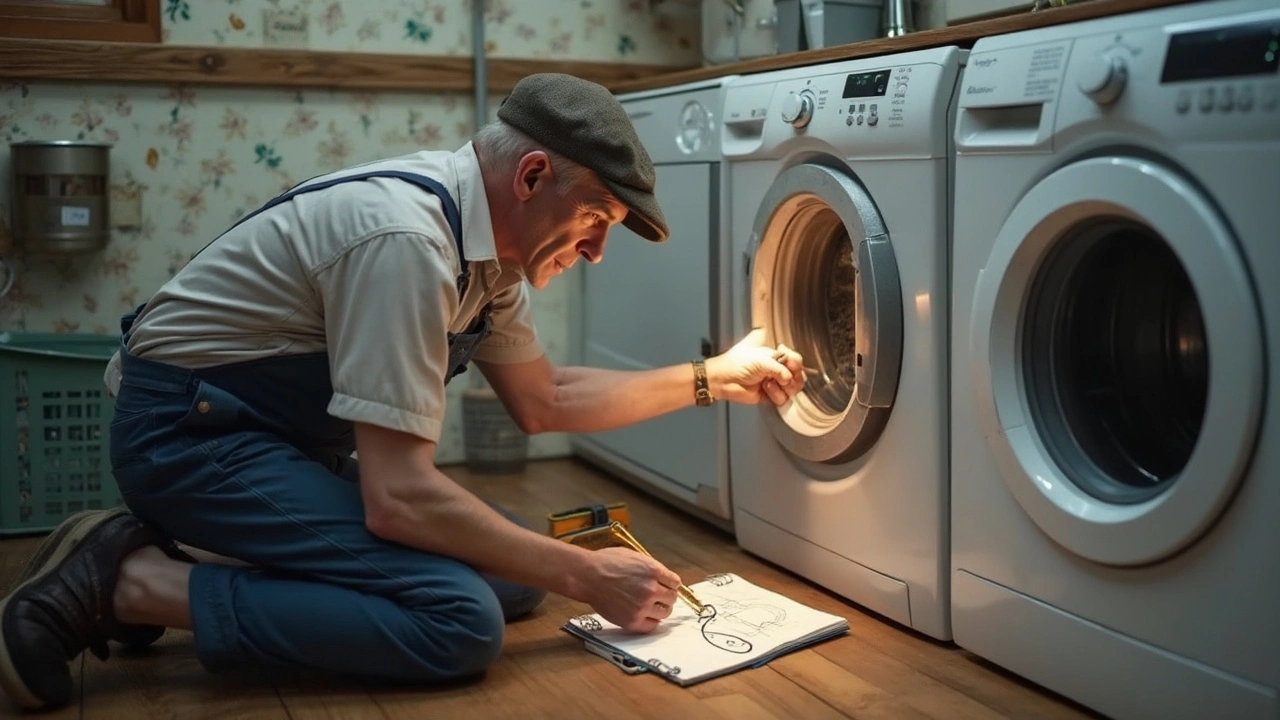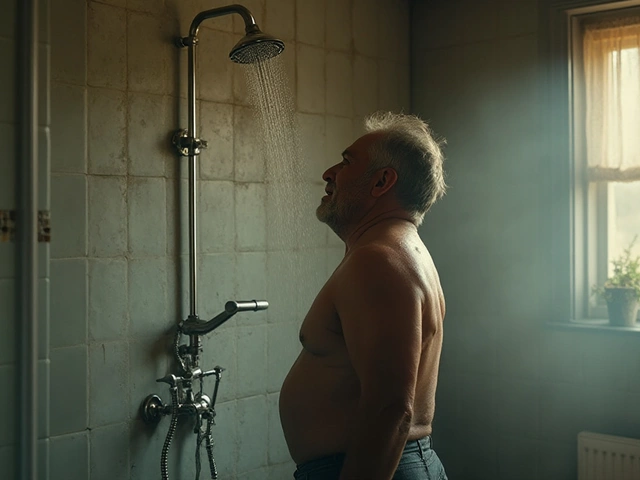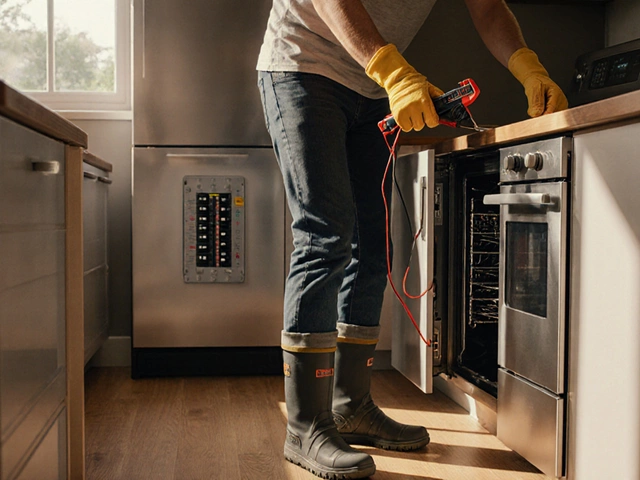The laundry basket’s overflowing, you’ve got dinner in an hour, and now the washing machine is acting up. Sound familiar? You’re definitely not alone. Washer breakdowns happen to everyone, but figuring out what’s wrong isn’t the mystery it seems. A few smart checks can point you in the right direction before you break out the toolbox—or Google the nearest repair shop.
The first thing to do: pay attention to exactly what your washer is (or isn’t) doing. Is it refusing to turn on, stopping mid-cycle, or is it rumbling and knocking like it swallowed a sock? Each problem has its own usual suspects. Spotting the symptom early often means you can nip the problem in the bud without a big repair bill. Honestly, half the time it’s something simple that doesn’t need a pro.
- Spotting Common Washer Symptoms
- Tools and Quick-Check Tricks
- What the Weird Sounds and Leaks Mean
- Knowing When to Call for Backup
Spotting Common Washer Symptoms
If you want to figure out washer problems quickly, you’ve got to start by noticing the details. A washing machine acts up in pretty predictable ways, and the trick is matching the symptom to the right cause.
Here’s what to watch for:
- Washer won’t start: Sometimes it’s as simple as an unplugged cord or a tripped circuit breaker. Double-check your power supply before blaming the machine.
- Washer won’t spin: If your clothes are soaked at the end, that means something is wrong with the spinning. Could be a broken belt, lid switch, or the machine may be out of balance because of one heavy wet blanket.
- Washer leaks water: Pool of water on the floor? Inspect the door gasket (especially on front-loaders), hoses, or connections at the back. Even a worn detergent drawer gasket can lead to leaks.
- Strange noises or shaking: If your washer sounds like sneakers in a dryer or is moving around, check for coins or buttons stuck inside. Make sure the machine is level—uneven flooring causes a lot of banging and walking washers.
- Bad smells: That stale, musty odor comes from leftover detergent, lint, or even mold hiding in the drum or door seal. Most folks forget to leave the door open for air after a load, but it really helps.
- Error codes: Modern washers often flash an error code. Don’t ignore these—they’re like a cheat code straight from the manufacturer, pointing you to clogged pumps, stuck valves, or electrical hiccups.
The biggest tip? Don’t guess. Watch how the washer behaves from start to finish, and look for any pattern—does it always stop at the same time, leak only with big loads, or smell worse in humid weather? Jot down the details. When you search for washer problems online or tell a technician, those observations can make all the difference. Think like a detective, not a gambler.
Tools and Quick-Check Tricks
You don’t need a box full of pro tools to troubleshoot a washing machine—usually, a basic toolkit from the garage will do. When a washer acts up, these quick checks and a few handheld tools can save you a massive headache.
- Multimeter: Great for checking if power is actually reaching parts like the lid switch or control board. A surprisingly high number of problems are just dead outlets or bum switches.
- Flashlight: Lighting helps when you’re poking around behind or under the washer, especially checking for leaks or loose wires.
- Adjustable wrench and screwdriver: Most washers just need a Phillips screwdriver and a basic wrench to get covers off or hoses tightened.
- Towel or shallow pan: You’d be amazed how much water comes out when disconnecting hoses. A towel under the washer can catch leaks while you check connections.
Before taking anything apart, here’s a fast checklist that works for any household:
- Unplug the washer first. Even if you’re just looking, better safe than sorry.
- Check the power outlet by plugging in a lamp or phone charger. Shocking, but about 15% of washer service calls are just tripped breakers or dead outlets.
- Inspect hoses and connections—most leaks start where the fill hoses screw in or at the drain hose clamp.
- Take a quick look under the lid. If your washer isn’t spinning or draining, the lid switch (or its magnet on a front-loader) is busted more often than not.
- Run a "rinse and spin" test with a small load. Odd noises, slow draining, or failure to spin stand out when the drum’s moving.
Here’s a handy chart for common washer issues and what’s usually causing them:
| Problem | Typical Cause | Quick Check |
|---|---|---|
| No power | Outlet, circuit breaker, control board | Try another appliance, reset breaker |
| Not draining | Clogged filter/pump, blocked hose | Clean filter, check hose for lint/coins |
| Leaking water | Loose hose, damaged seal, cracked tub | Tighten hoses, inspect under washer |
| Won't spin | Faulty lid switch, unbalanced load, belt issue | Test switch, redistribute laundry, check belt |
| Weird noises | Foreign objects, worn bearings, loose drum | Inspect drum, check for coins/screws inside |
The fastest way to figure out washer problems is narrowing things down by symptom. Hands-on is always faster than guessing. And if something looks seriously broken, taking a phone pic helps if you’re calling for help or a new part.

What the Weird Sounds and Leaks Mean
Nothing ratchets up anxiety like a banging, grinding, or high-pitched squeal coming from your washer. Those sounds—and everything from puddles under the machine to dripping behind it—tell a pretty clear story, if you know how to decode them.
If your washer sounds like it’s trying out for a drumline, odds are the load is off-balance. Maybe you tossed in all the towels on one side or some rogue socks got jammed in a pocket. Sometimes, though, it’s about worn-out shock absorbers or dampers. Front-loaders especially rely on these parts to keep quiet and steady. If you hear a loud banging during the spin cycle, take a peek at the load first. If that’s not it, those shock parts might need replacing.
Grinding–that’s usually the sign of something stuck inside the drum, like a stray coin or hairpin, or possibly trouble with the motor coupling. When you hear grinding or scraping, check inside the drum for any foreign bits. If nothing’s there, it may be time to shut things down and inspect below—this could save the motor from worse damage.
Squealing or whining noises often point to bad belts or pulleys, which keep the drum turning smoothly. These parts wear out after a few years and will start to screech when under strain. Plenty of folks just live with the noise for a while, but ignoring it can mean a snapped belt and a washer that won’t spin at all.
Leaks are a whole other headache. Most leaks start with one of a few trouble spots. Door seals (specifically on front-loaders) can get grimy and torn, leading to a slow drip. Detergent drawers, if clogged with old soap or gunk, sometimes overflow and dump water down the front. And, of course, hoses in the back of the washer can split or come loose. A quick check by running your hand along the hoses and under the door seal often reveals the culprit. Plus, replacing a door seal or hose is a realistic DIY fix for most people with basic tools.
Here’s a cheat sheet for matching sounds and leaks with likely causes:
| Symptom | Likely Cause | Quick Fix |
|---|---|---|
| Loud banging | Unbalanced load, worn shock absorbers | Redistribute clothes, check shocks |
| Grinding noise | Foreign object in drum, bad motor coupling | Check drum, inspect coupling |
| Squealing sound | Worn belt or pulley | Inspect and replace belt |
| Drip/leak at door | Faulty door seal | Wipe and inspect, replace if torn |
| Water under machine | Loose/split hose, clogged detergent drawer | Tighten or replace hose, clean drawer |
Washing machines can develop these issues after just a few years of regular family laundry—especially with heavy loads. According to manufacturers, the average washer hose lasts around five years before it should be checked or replaced. Tightening connections or doing a quick visual inspection every few months goes a long way.
So, next time you hear a weird clunk or spot a leak, don’t panic. Listen carefully, take a quick look at the common problem areas, and save yourself from either a flooded laundry room or a pricey repair bill. Focusing on these washer problems helps keep your laundry routine running as smooth as possible.
Knowing When to Call for Backup
Let’s be real—sometimes even your best troubleshooting moves aren’t enough, and that’s okay. There’s a line between a quick fix and a job for someone with the right gear and know-how. So, when should you stop tinkering and call in a pro?
- The washing machine won’t power on after you’ve checked the plug, breakers, and door latch.
- There’s water pooling around the washer, and hoses and connections all look fine.
- You hear loud grinding, screeching, or electrical burning smells. This could mean motor, bearing, or wiring problems.
- The drum isn’t spinning or agitating at all, but the panel lights up like normal.
- Error codes keep popping up, and resetting doesn’t work.
Most repairs cost less when you get help early, especially with electrical or water leaks involved. A 2024 survey by HomeGuide.com showed the average washing machine repair bill in the US runs from $150 to $300, but leaving water damage alone can jack up the costs fast.
| Problem | DIY Possible? | Should Call a Pro? |
|---|---|---|
| Won’t Drain | Yes (check hose/filter) | If pump or wiring issue |
| Leaks | If hose/gasket | If internal or drum crack |
| No Power | Check outlet/breaker | If all else fails |
| Weird Noises | Sometimes (coin/bra wire) | If ongoing or loud |
Trust your gut, too. If you’re uncomfortable poking around inside the washer—or if you see water near electrical parts—don’t risk it. Get backup. My friend once tried to fix what seemed like a harmless leak and ended up getting a shock (he’s fine, but his pride didn’t recover quickly). Moral of the story: Washing machines are powerful, and it’s better to be safe than sorry.
Getting help from a professional isn’t admitting defeat; it’s keeping your home (and your laundry routine) safe. So if you hit a wall with any washer problems, that’s your cue to reach for the phone, not the wrench.







